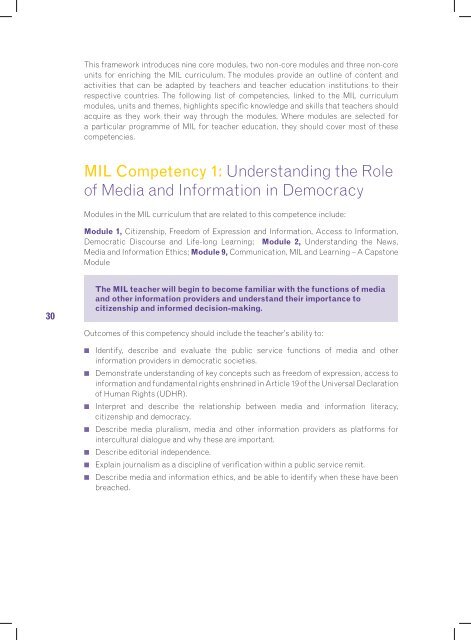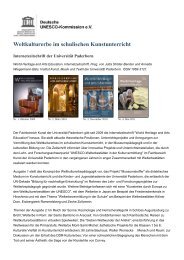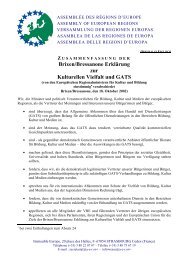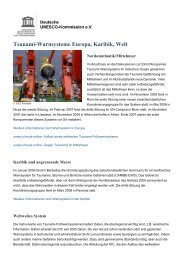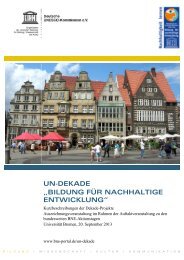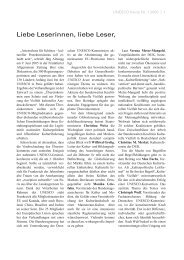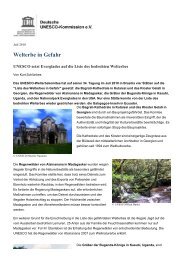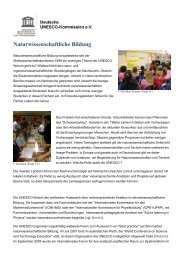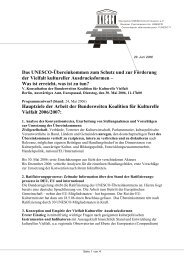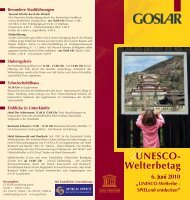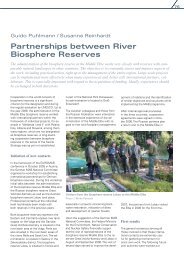Media and information literacy curriculum for teachers.pdf - Yo! BaNa
Media and information literacy curriculum for teachers.pdf - Yo! BaNa
Media and information literacy curriculum for teachers.pdf - Yo! BaNa
You also want an ePaper? Increase the reach of your titles
YUMPU automatically turns print PDFs into web optimized ePapers that Google loves.
This framework introduces nine core modules, two non-core modules <strong>and</strong> three non-core<br />
units <strong>for</strong> enriching the MIL <strong>curriculum</strong>. The modules provide an outline of content <strong>and</strong><br />
activities that can be adapted by <strong>teachers</strong> <strong>and</strong> teacher education institutions to their<br />
respective countries. The following list of competencies, linked to the MIL <strong>curriculum</strong><br />
modules, units <strong>and</strong> themes, highlights specific knowledge <strong>and</strong> skills that <strong>teachers</strong> should<br />
acquire as they work their way through the modules. Where modules are selected <strong>for</strong><br />
a particular programme of MIL <strong>for</strong> teacher education, they should cover most of these<br />
competencies.<br />
MIL Competency 1: Underst<strong>and</strong>ing the Role<br />
of <strong>Media</strong> <strong>and</strong> In<strong>for</strong>mation in Democracy<br />
Modules in the MIL <strong>curriculum</strong> that are related to this competence include:<br />
Module 1, Citizenship, Freedom of Expression <strong>and</strong> In<strong>for</strong>mation, Access to In<strong>for</strong>mation,<br />
Democratic Discourse <strong>and</strong> Life-long Learning; Module 2, Underst<strong>and</strong>ing the News,<br />
<strong>Media</strong> <strong>and</strong> In<strong>for</strong>mation Ethics; Module 9, Communication, MIL <strong>and</strong> Learning – A Capstone<br />
Module<br />
30<br />
The MIL teacher will begin to become familiar with the functions of media<br />
<strong>and</strong> other <strong>in<strong>for</strong>mation</strong> providers <strong>and</strong> underst<strong>and</strong> their importance to<br />
citizenship <strong>and</strong> in<strong>for</strong>med decision-making.<br />
Outcomes of this competency should include the teacher’s ability to:<br />
◾<br />
◾<br />
◾<br />
◾<br />
◾<br />
◾<br />
◾<br />
Identify, describe <strong>and</strong> evaluate the public service functions of media <strong>and</strong> other<br />
<strong>in<strong>for</strong>mation</strong> providers in democratic societies.<br />
Demonstrate underst<strong>and</strong>ing of key concepts such as freedom of expression, access to<br />
<strong>in<strong>for</strong>mation</strong> <strong>and</strong> fundamental rights enshrined in Article 19 of the Universal Declaration<br />
of Human Rights (UDHR).<br />
Interpret <strong>and</strong> describe the relationship between media <strong>and</strong> <strong>in<strong>for</strong>mation</strong> <strong>literacy</strong>,<br />
citizenship <strong>and</strong> democracy.<br />
Describe media pluralism, media <strong>and</strong> other <strong>in<strong>for</strong>mation</strong> providers as plat<strong>for</strong>ms <strong>for</strong><br />
intercultural dialogue <strong>and</strong> why these are important.<br />
Describe editorial independence.<br />
Explain journalism as a discipline of verification within a public service remit.<br />
Describe media <strong>and</strong> <strong>in<strong>for</strong>mation</strong> ethics, <strong>and</strong> be able to identify when these have been<br />
breached.


